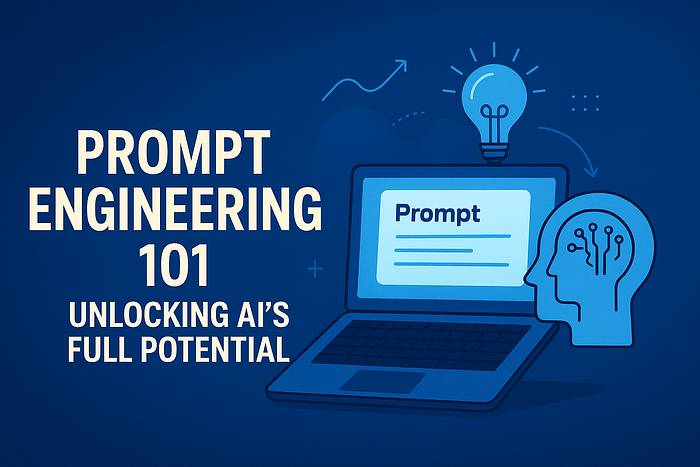Prompt Engineering 101: Unlocking AI’s Full Potential

Introduction
Artificial intelligence (AI) is no longer just a futuristic concept — it’s reshaping industries, from marketing and finance to healthcare and research. Central to this transformation is prompt engineering, the art and science of crafting precise inputs that guide AI models, particularly large language models (LLMs), to deliver high-quality, relevant outputs.
Prompt engineering is not just a technical skill — it’s a bridge between human intent and machine intelligence. A well-designed prompt ensures that AI understands context, follows instructions accurately, and generates content that meets specific goals. With businesses increasingly relying on AI for content creation, decision-making, and customer engagement, mastering prompt engineering is becoming indispensable.
Why Prompt Engineering Matters
The quality of an AI’s output heavily depends on the prompts it receives. According to OpenAI research in 2023, optimized prompts can improve model accuracy by up to 35%, reduce response errors, and enhance content relevance. In practice:
- Marketing teams using AI to generate blog posts or social media copy report a 40% reduction in editing time when prompts are carefully structured.
- Customer support chatbots produce contextually accurate responses, reducing miscommunication and improving customer satisfaction.
- Data analysts and researchers save hours when AI is guided with precise instructions, allowing faster extraction of insights from large datasets.
In short, prompt engineering is the difference between generic AI responses and outputs that are actionable, relevant, and aligned with business objectives.
Types of Prompts
1. Zero-Shot Prompting
Zero-shot prompting involves giving AI a task without examples. It relies on the model’s pre-trained knowledge to generate a response.
Example:
“Summarize the following article in three sentences.”
Use Case: Quick summaries, simple questions, or when no prior examples are available.
2. One-Shot Prompting
One-shot prompting provides a single example to illustrate the desired output.
Example:
“Translate this English sentence to French: ‘Hello, how are you?’ → ‘Bonjour, comment ça va?’”
Use Case: Useful when AI may need guidance on output format, style, or tone.
3. Few-Shot Prompting
Few-shot prompting provides multiple examples, improving output quality for complex tasks.
Example:
“Summarize these three articles into bullet points: [Article 1], [Article 2], [Article 3]”
Use Case: Complex summarization, content creation, or nuanced analytical tasks.
Read More: Prompt Engineering 101: Unlocking AI’s Full Potential



Comments
Post a Comment